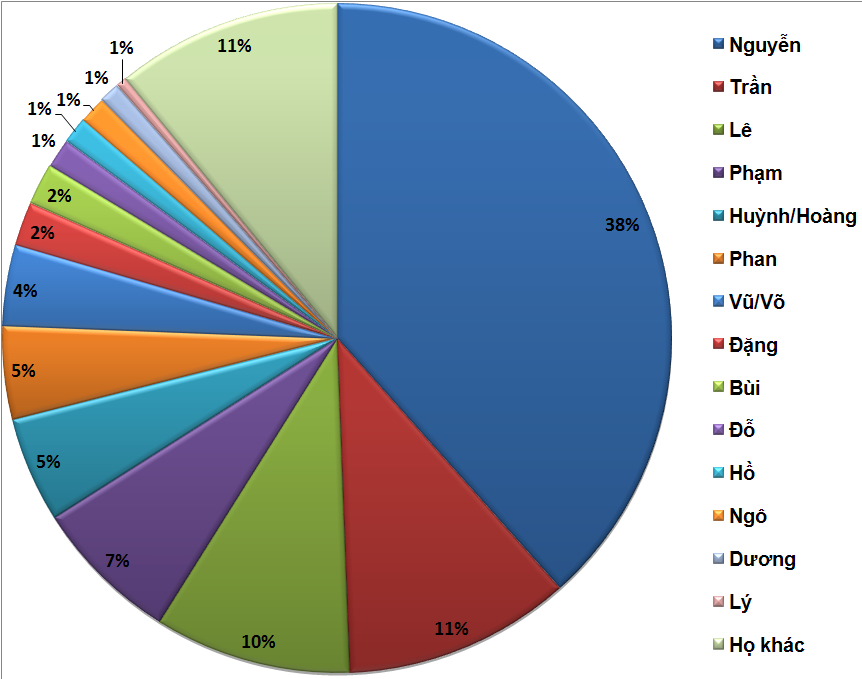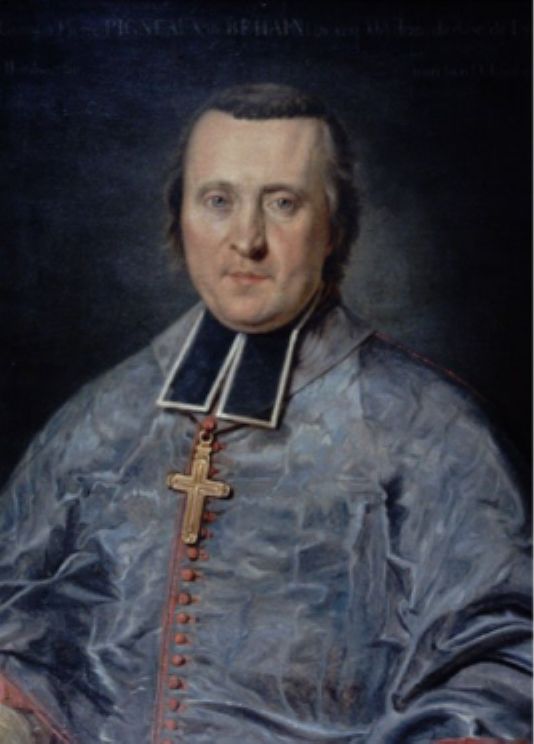|
Phạm Văn Trị
Phạm Văn Trị (范文治, ?–?) or Phạm Công Trị (范公治), later Nguyễn Văn Trị (阮文治), was a general of Tây Sơn dynasty, Vietnam. He was the second son of Phạm Công Hưng. Nguyễn Huệ defeated Chinese army in Ngọc Hồi and Đống Đa in 1789. But Huệ decided to submit himself as vassal of Qing China and agreed to pay tribute annually. If not, Tây Sơn dynasty would fall in a two-front war with both Qing China and Siam.''Draft History of Qing'', vol. 527 In order to gain support from Qing China, Nguyễn Huệ promised that he would go himself to have an audience with Qianlong Emperor. But actually Huệ did not want to go at all. Finally, Phạm Văn Trị was chosen as the political decoy and went to China. He reached Beijing, then to Chengde Mountain Resort, to celebrate eightieth birthday of Qianlong. Qianlong was very happy, and recognized Nguyễn Huệ as the ruler of Vietnam. Qianlong granted a lot of gifts to him. Before he ret ... [...More Info...] [...Related Items...] OR: [Wikipedia] [Google] [Baidu] |
Chengde Mountain Resort
Chengde Mountain Resort in Chengde (; Manchu: ''Halhūn be jailara gurung''), is a large complex of imperial palaces and gardens situated in the Shuangqiao District of Chengde in northeastern Hebei province, northern China, about 225 km northeast of Beijing. This resort was frequently used as a summer palace during the Qing dynasty. Because of its vast and rich collection of Chinese landscapes and architecture, the Mountain Resort in many ways is a culmination of all the variety of gardens, pagodas, temples and palaces from various regions of China. In 1994, The Mountain Resort was awarded World Heritage Site status. Chengde is one of China's four famous gardens, national relic protection unit and Class 5A Tourist Attractions in China. Name Chengde Mountain Resort is also sometimes called Rehe Xinggong (热河行宫) or Ligong (). History Built between 1703 and 1792 during the Qing dynasty, the Mountain Resort took 89 years to complete. It covers a total area of , almost h ... [...More Info...] [...Related Items...] OR: [Wikipedia] [Google] [Baidu] |
Lê Chất
Lê Chất ( vi-hantu, 黎質, ?–1826), also known as Lê Văn Chất (黎文質), Lê Tông Chất (黎宗質) or Lê Công Chất (黎公質), was a general of Tây Sơn dynasty. Later he became a general of Nguyễn dynasty. Early life Lê Chất was born in Phù Mỹ District, Bình Định Province. He was a son-in-law of Lê Trung. He served as ''Đại Đô đốc'' (大都督, "Grand Chief Controller") in Tây Sơn dynasty. After the death of Emperor Quang Trung, Chất prophesied that the Tây Sơn dynasty would soon decline and tried to persuade Lê Trung to surrender to Nguyễn lord several times. But Trung hesitated. In 1798, Lê Trung was purged by Emperor Cảnh Thịnh. He had to surrender to the Nguyễn lord. He was appointed ''hậu quân tướng quân'' ("general of the rear army") by Gia Long. Career Chất played an important role in the pacification of the Tây Sơn dynasty. He was ordered to build Imperial City of Huế together with Phạm ... [...More Info...] [...Related Items...] OR: [Wikipedia] [Google] [Baidu] |
Lê Văn Duyệt
Lê Văn Duyệt)., group=n (1763 or 1764 – 30 July 1832) was a Vietnamese general who helped Nguyễn Ánh—the future Emperor Gia Long—put down the Tây Sơn wars, unify Vietnam and establish the Nguyễn dynasty. After the Nguyễn came to power in 1802, Duyệt became a high-ranking mandarin, serving under the first two Nguyễn emperors Gia Long and Minh Mạng.Nghia M. Vo ''Saigon: A History'' – Page 46 2011 Born into a family of peasants near Tiền Giang, Duyệt joined Prince Nguyễn Ánh in fighting the Tây Sơn wars. Because of Duyệt's military ability, he quickly rose through the ranks of the Nguyễn army and became a marshal when the Tây Sơn-Nguyễn war ended. After the foundation of the Nguyễn dynasty, Duyệt served as a high-ranking mandarin and, later, viceroy of the southern part of Vietnam, ruling from Gia Định (modern-day Saigon). His governance greatly stabilized and helped develop the Nam Bo region, turning it into a wealthy and peac ... [...More Info...] [...Related Items...] OR: [Wikipedia] [Google] [Baidu] |
Nguyễn Lord
Nguyễn () is the most common Vietnamese surname. Outside of Vietnam, the surname is commonly rendered without diacritics as Nguyen. Nguyên Nguyễn () is the most common Vietnamese surname. Outside of Vietnam, the surname is commonly rendered without diacritics as Nguyen. Nguyên (元)is a different word and surname. By some estimates 39 percent of Vietnamese people bear this s ... (元)is a different word and surname. By some estimates 39 percent of Vietnamese people bear this surname.Lê Trung Hoa, ''Họ và tên người Việt Nam'', NXB Khoa học - Xã hội, 2005 Origin and usage "Nguyễn" is the spelling of the Sino-Vietnamese vocabulary, Sino-Vietnamese pronunciation of the Chinese characters, Han character wikt:阮, 阮 (, ). The same Han character is often romanized as ''Ruǎn'' in Standard Chinese, Mandarin, ''Yuen'' in Cantonese, ''Gnieuh'' or ''Nyoe¹'' in Wu Chinese, or ''Nguang'' in Fuzhou dialect, Hokchew. . Hanja reading (Korean language, Korean) ... [...More Info...] [...Related Items...] OR: [Wikipedia] [Google] [Baidu] |
Huế
Huế () is the capital of Thừa Thiên Huế province in central Vietnam and was the capital of Đàng Trong from 1738 to 1775 and of Vietnam during the Nguyễn dynasty from 1802 to 1945. The city served as the old Imperial City and administrative capital for the Nguyễn dynasty and later functioned as the administrative capital of the protectorate of Annam during the French Indochina period. It contains a UNESCO-designated site, the Complex of Huế Monuments, which is a popular tourist attraction. Alongside its moat and thick stone walls the complex encompasses the Imperial City of Huế, with palaces and shrines; the Forbidden Purple City, once the emperor's home; and a replica of the Royal Theater. Nearly 4.2 million visitors had visited the city in 2019 and many of its historic landmarks are still undergoing restoration. History The oldest ruins in Hue belong to the Kingdom of Lam Ap, dating back to the 4th century AD. The ruins of its capital, the ancient ci ... [...More Info...] [...Related Items...] OR: [Wikipedia] [Google] [Baidu] |
Phú Xuân
Phú Xuân (富春) was the historic capital of the Nguyễn lords, the Tây Sơn dynasty, and later became the Nguyễn dynasty's capital (renamed Huế). History In 1306, the King of Champa Chế Mân offered Vietnam two Chăm prefectures, Ô and Lý, in exchange for marriage with a Vietnamese princess named Huyền Trân.Chapius, p.85. The Vietnamese emperor Trần Anh Tông accepted this offer. He took and renamed Ô and Lý prefectures to Thuận prefecture and Hóa prefecture, respectively, with both of them often referred to as ''Thuận Hóa'' region. In 1592, the Mạc dynasty was forced to flee to Cao Bằng and the Lê emperors were enthroned as ''de jure'' Vietnamese rulers under the leadership of Nguyễn Kim, the leader of Lê Dynasty loyalists. Later, Kim was poisoned by a Mạc Dynasty general which paved the way for his son-in-law, Trịnh Kiểm, to take over the leadership. Kim's eldest son, Nguyễn Uông, was also assassinated in order to secure Trịnh Ki� ... [...More Info...] [...Related Items...] OR: [Wikipedia] [Google] [Baidu] |
Nguyễn Ánh
Gia Long ( (''North''), (''South''); 8 February 1762 – 3 February 1820), born Nguyễn Phúc Ánh (阮福暎) or Nguyễn Ánh, was the founding emperor of the Nguyễn dynasty, the last dynasty of Vietnam. His dynasty would rule the unified territories that constitute modern-day Vietnam until 1945. A nephew of the last Nguyễn lord who ruled over south Vietnam, Nguyễn Ánh was forced into hiding in 1777 as a fifteen-year-old when his family was slain in the Tây Sơn revolt. After several changes of fortune in which his loyalists regained and again lost Saigon, he befriended the French Catholic Bishop Pierre Pigneau de Behaine. Pigneau championed his cause to the French government and managed to recruit volunteers when that fell through to help Nguyễn Ánh regain the throne. From 1789, Nguyễn Ánh was once again in the ascendancy and began his northward march to defeat the Tây Sơn, reaching the border with China by 1802, which had previously been under the contro ... [...More Info...] [...Related Items...] OR: [Wikipedia] [Google] [Baidu] |
Đại Nam Thực Lục
''Đại Nam thực lục'' ( vi-hantu, 大南寔錄, lit. "Veritable Records of the Great South", "Annals of Đại Nam", "Chronicle of Greater Vietnam") was the official history of Nguyễn dynasty, Vietnam. It contained the royal records of the Nguyễn lords, and the imperial annals of Nguyễn dynasty emperors up until Khải Định. Just like other official histories, ''Đại Nam thực lục'' was written in Classical Chinese. The annals comprised 584 volumes. At first the records were called "''Đại Nam thật lục''" "". During Thiệu Trị's reign however, "" was changed to "", and its pronunciation changed to "thực", because "實" was against the naming taboo of Empress Tá Thiên, Thiệu Trị's mother. ''Đại Nam thực lục'' was the most important primary source regarding the Nguyễn dynasty. It was an important reference of Cao Xuân Dục's ''Quốc triều chính biên toát yếu'' and Trần Trọng Kim's ''Việt Nam sử lược''. History of ... [...More Info...] [...Related Items...] OR: [Wikipedia] [Google] [Baidu] |
Việt Nam Sử Lược
( vi-hantu, 越南史略, french: Précis d'Histoire du Việt-Nam, lit. "Outline History of Vietnam"), was the first history text published in the Vietnamese and the Vietnamese alphabet. It was compiled by Vietnamese historian Trần Trọng Kim. It covered the period from Hồng Bàng dynasty to the time of French Indochina. The book was first published in 1920 and reprinted many times. It was the standard history text in South Vietnam.Pelly, p 307. It was often criticized by Communist historians, who argued with Kim's interpretation of the Tây Sơn Rebellion and the reign of Hồ Quý Ly.Pelly, p. 37. Both of these were heroes to the Communists, but condemned by mainstream historians. Background Since late 19th century, Vietnam became a French colony. Vietnamese emperors were supper rulers of the French and had little actual power. Vietnam was facing an uncertain future. Trần Trọng Kim believed that if the Vietnamese people knew their own history, they would be patriotic ... [...More Info...] [...Related Items...] OR: [Wikipedia] [Google] [Baidu] |






